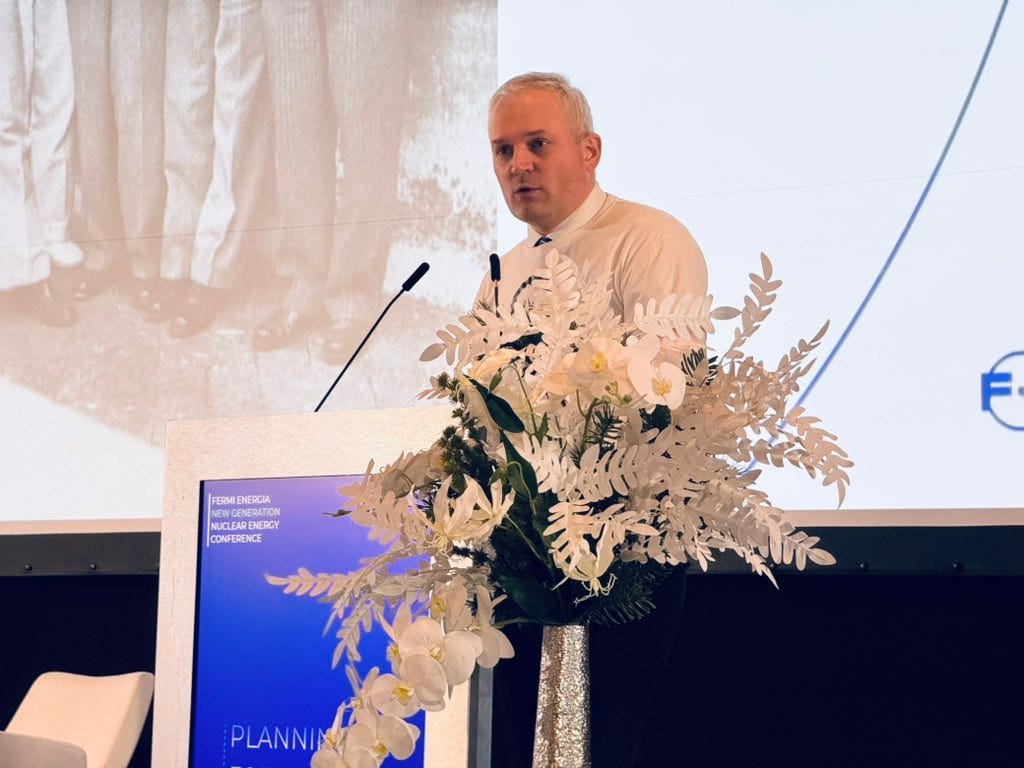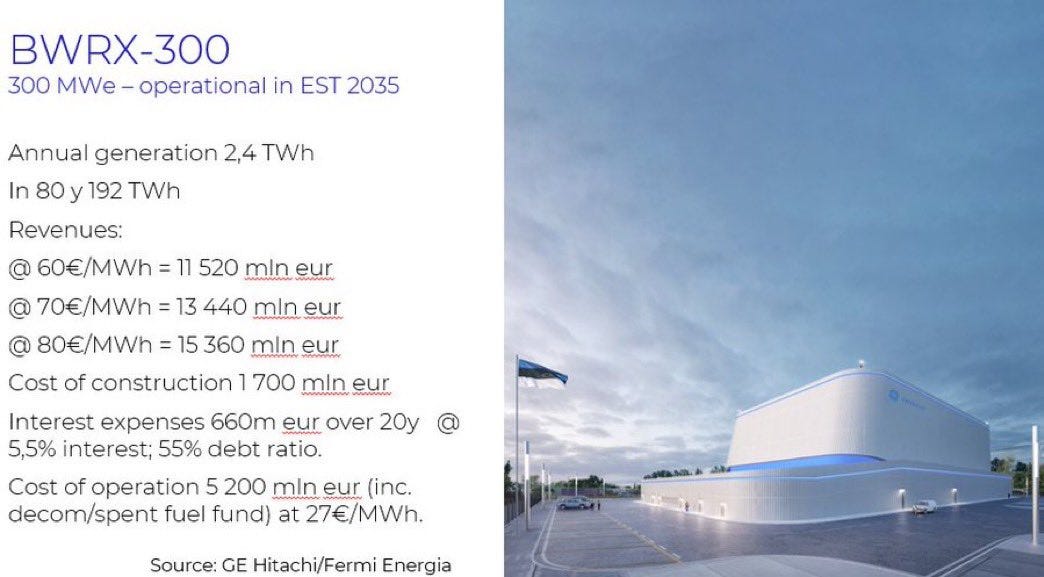Estonia Cuts the Cord
The Baltic States officially disconnected from the Russian power grid. Will their quest for energy independence take them to a nuclear future?
Estonia and its Baltic neighbors Lithuania and Latvia finally cut itself off from the Russian Grid this week. This separation was decades in the making. Ever since the three Baltic States joined the EU and NATO in 2004 they’ve been upgrading their grid in preparation for this transition. “Russia can no longer use energy as a tool of blackmail,” wrote Kaja Kallas, Estonia's former prime minister and the EU’s current top diplomat.
I’m writing this on Sunday, the day the three countries exit island mode and connect to the European grid. I don’t want to jinx them, but so far, so good. There’s been no reports of mishaps.
This historic milestone is not the end of the journey for Estonia’s energy independence however.
“It will become even more important that the Baltic States themselves would have reliable, affordable, carbon-free electricity production capacity,” said Sandor Liive, Chairman of Fermi Energia, a start-up aiming to build Estonia’s first nuclear power plant by as early as 2035. Liive was speaking at the 2025 Fermi Energia Conference in Tallinn on Thursday.
“Gas is an emergency solution. It is not a competitive advantage. We’ve seen it in Germany. It worked as long as they had affordable Russian gas but not beyond that. We need to build power plants that provides us with secure, affordable clean energy. This is why nuclear power has been included in the [Estonian] Energy Development Plan by the parliament.”
Fermi Energia has selected GE-Hitachi’s BWRX-300 to be their reactor. Fredrik Vitabäck, GE-Hitachi’s Senior Marketing Manager explained that this is an evolution of the tried-and-true Boiling Water Reactor (BWR) design that meaningfully reduces the scale of the construction.
“It means that you can reduce the volume of the construction. Not only the building size and volume in cubic meters, it is also the volume of risk and the volume of time. It takes away some of the key components that traditionally made nuclear very hard to compete against other technologies.”
The first-of-a-kind build ongoing at Darlington is projected to be complete in 2029. It will be the test for whether the promise of the BWRX-300 as the Boiling Water Reactor we all know and love already but smaller and lighter will work out.
Speaking about costs at the conference Kalev Kallemets, the co-founder of Fermi Energia estimated that the cost of building a BWRX-300 in Estonia will be 1,700 million Euros.
“We cannot go back in time and get the costs of the past. The reality is there has been price increases over the years,” said Kallemets “but is proven that the Boiling Water Reactor works and it is of proven value.”
THE ELEMENTAL TAKE
The Baltic states' arduous journey to decouple from the Russian energy grid serves as a powerful reminder that achieving energy independence is neither quick nor inexpensive—it demands significant investment, perseverance, and strategic planning.
Estonia's pursuit of its own nuclear power plant through Fermi Energia exemplifies this challenge. To meet the ambitious 2035 target, numerous parallel efforts must succeed: establishing a robust national regulatory framework, identifying an appropriate site, developing local supply chains, training skilled workers, and securing substantial funding. Yet, these challenges pale in comparison to the enduring value of such an endeavor.
A nuclear power plant represents not just a multi-decade asset but also a cornerstone for long-term energy security, price stability, and economic resilience. Estonians need only look across their borders to Finland, where earlier investments in nuclear energy have yielded remarkable dividends.
Building on Estonia's remarkable post-Soviet growth story, embracing nuclear energy promises to fortify both the nation's prosperity and its sovereignty well into the future.







Based Estonia. Pragmatic af.
Sounds good!